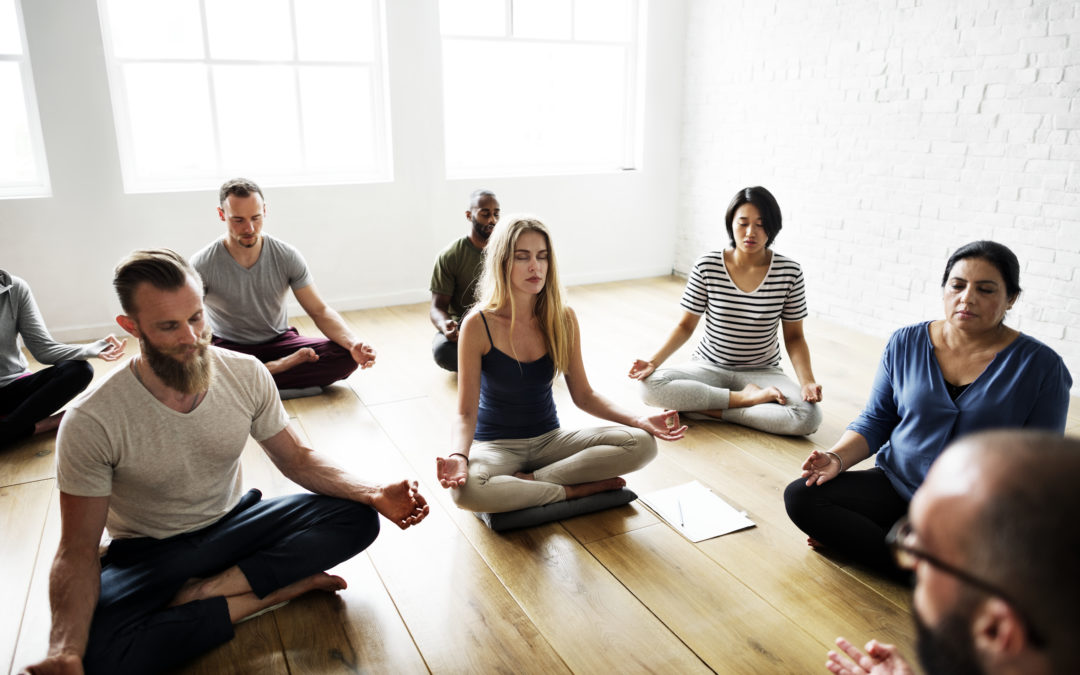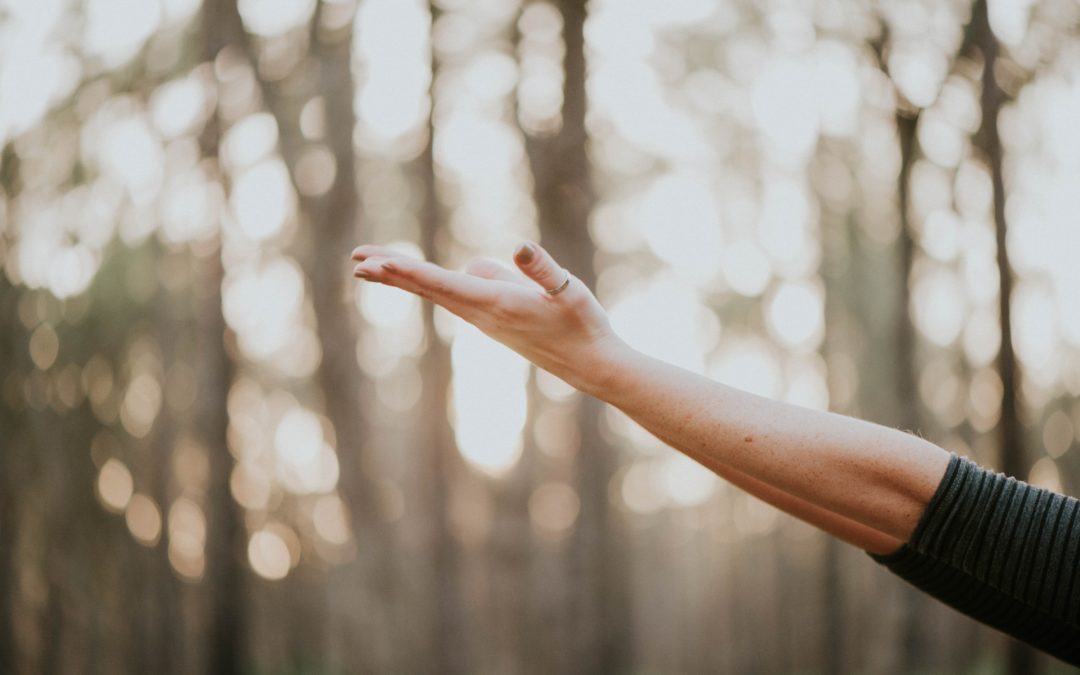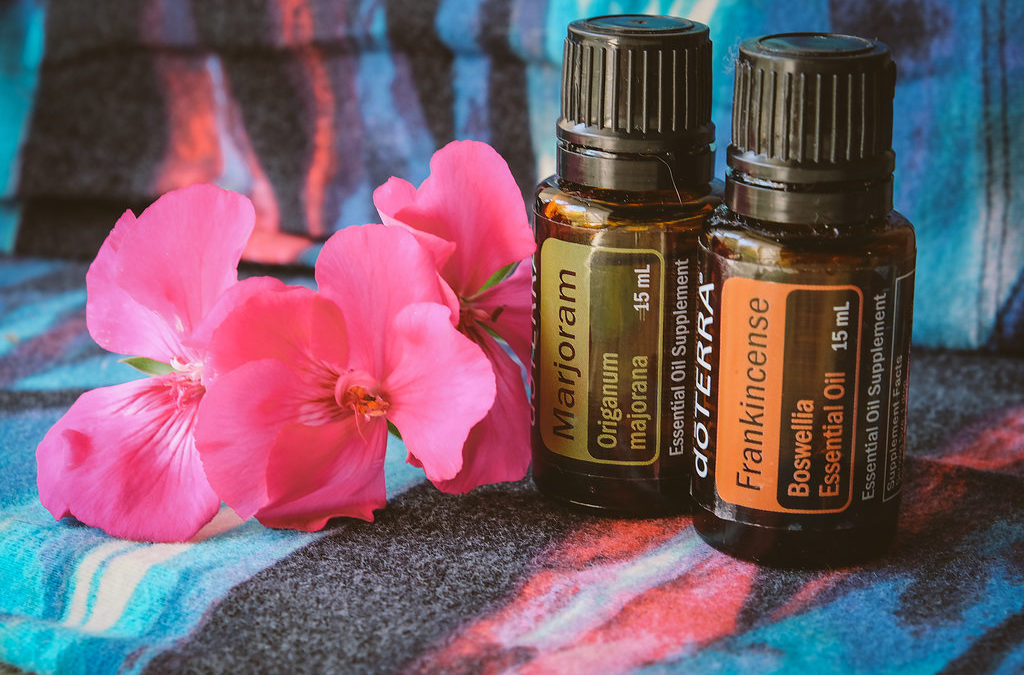
by nobody | Oct 13, 2017 | Yoga Therapy
“Surround yourself with people who add value to your life, who challenge you to be greater than you were yesterday, who sprinkle magic into your existence, just like you do to theirs. Life isn’t to be done alone. Find your tribe – and journey freely and loyally together.” – Alex Elle
Friendships are at the center of most of our lives. Just as there are numerous songs, movies and TV shows that revolve around romantic love and relationships, there are just as many that involve the other type of powerful love – the one that stems from our friendships. Some of the most iconic sounds and sights in pop-culture are about friendships, community and this idea of a “tribe.” The Beatles got it right when they wrote “With a Little Help from My Friends.”

Studies have shown that adults with close, long-term friendships have a better quality of life than those without them. Friendships have been found to enhance mood along with emotional and physical wellbeing. When we encounter life challenges, our friends are the ones we reach out to for comfort and support. These strong friendly ties are key to our continued growth and overall health.
This year alone, several of members of my personal tribe have faced major crises and several have encountered new beginnings. From the devastation of divorce and illness to the trials and tribulations of having a child, my tribe is going through it all. It’s important to me that I am there to support whatever their experience in the same way that they would mine. However, sometimes we find ourselves “getting lost” or feeling as though we can’t relate, which can make us wonder, “what is it that I have to offer?”
When I work with my clients, there are many times where I may have not experienced the exact event that they are going through, but more often than not I have experienced a similar emotion or sensation. Whether it be feeling helpless, hopeless, scared, anxious, excited, or alone, I am able to connect to that feeling, which allows me to guide them towards healing.
Whether you’ve been through it or not, it is critical to note that you are enough. With that said, here are the 3 things I do to support those around me both personally and professionally.
Hold Space
Holding space is a concept I heard a lot about throughout my yoga therapy education, but never understood it until I felt it. So, let’s break it down. When we hold something, we are supporting and preserving it. We maintain that thing’s original form, without changing or damaging its shape or allowing it to fall. The word “space” implies an expanse, a capacity and a sense of freedom. A space is a place where things can happen and a place where something can grow or unfold. Together, “holding space” is to create and maintain a place where things can exist, expand and grow in whatever way they are meant.
When you hold space for your loved ones, you are allowing them the chance to feel safe and supported in being exactly what they are, where they are and allowing whatever comes, to simply be experienced without judgement. When we hold space, it is important to note that we are not there to change, fix, or impose our own bias on the experience. Instead, we are preserving the experience, its existence in the present moment.

Pay Attention
Just like in meditation, it’s critical that while we are holding space, we take the time to pay attention and observe whatever it is that is showing up. When our friends call with a problem, a predicament or to simply share an experience, it is natural for us to want to give our advice, opinion, or share what we did in a similar situation. Remember, not everyone is searching for guidance. Sometimes, the search is to simply be heard.
Things to lookout for:
- What is my friend saying or (maybe even more so) what are they NOT saying?
- How are they saying it?
- What is their body language saying?
In order to properly support anyone, we must be tapped into their experience. This means not only hearing what that person is saying, but rather working to truly understand their message.

Gentle Guidance
Offering the right kind of help takes practice. Remember, not everyone is looking for advice. When we take away decision-making power, we can leave our loved ones feeling useless and incompetent. However, with careful attention, we are able to recognize the areas in which they feel most vulnerable and from there can invite in the right kind of help, the kind that leaves out judgement and shame. When people are learning, growing, or moving through a transition, it is only natural to make some mistakes along the way. Gently guiding people to trust their inner wisdom and intuition can build confidence and increase self-awareness. Additionally, offering words of reassurance can help remind your loved ones that the idea of “failure” is simply a part of the journey and not the end.

by nobody | Oct 5, 2017 | Yoga Therapy
Between the horrific natural disasters that have taken place in Texas, Florida, Mexico, Puerto Rico and beyond coupled with the unfathomable and unforgettable acts of hatred spreading across the country from Charlottesville to Las Vegas, it seems more challenging than ever to hold onto ourselves and to hope. In my work with clients, students, teachers and other professionals, I have noticed an increase in anxiety about the stateof the present and a growing fear of the future.

As we all watch the tragic events unfold on the news, I’ve noticed two distinct reactions:
1) Some feel overwhelmed while
2) others feel numb.
I tend to veer towards feeling #1 and get anxious and overwhelmed. What the heck is going on? Do I have loved ones hurt? What if something like this happens here? There is so much pain, how can I ever do enough to help?

Whether you tend to be more on the overwhelmed side, numb side, or maybe a combination both, it’s apparent that we are all struggling to find ways to cope with anger, grief, and uncertainty. How we choose to handle these challenges and stressors are important, not only for our own well-being, but how it impacts those around us and also our children, grandchildren, and even great grandchildren (Family Ties: Healing What We Inherit). Now more than ever, it is critical that we have a practice that offers us ways to cope with the chaos, hold on to our truth, and share love and compassion with others.
Building healthy coping mechanisms is at the core of traditional psycho-therapy, and is also a key component of yoga therapy. Coping mechanisms aren’t about running away from what’s happening or masking your feelings with a vice. It’s about getting to the root, paying attention and processing your emotions to find peace.
Here are a few things I’ve been practicing with my clients and incorporating into my individual practice. What techniques have you found effective?
Breathe into Anger: Anger and frustration seems to be an unavoidable emotion surrounding the recent tragedies. It’s common for many of us to regard anger as negative or damaging. However, what is damaging about anger is the way in which we deal with it.
Most commonly we challenge anger by reacting to it unproductively while in our fight/flight stress response or by stuffing it down, trapping it inside ourselves, and leaving it to fester into disease. Those who react to anger with the untamed fire of the fight/flight, are more prone to high blood pressure, cholesterol problems, weight gain, and heart conditions. Yoga’s therapeutic practices have proven to act as an anger “de-fuser” by giving us space to positively observe anger and offer tools to “ride the wave”.

Breathing (otherwise known as pranayama) is a powerful tool to help release stagnant energy and bottled up emotions. Breathing stimulates our relaxation response offering a “cooling” energy to positively combat the heat anger brings. Breathing is also a great way to encourage us to slow down, observe and assess a situation.
In my work with my clients, this is the first place I start. Without gaining control of our emotions or understanding how and where they are manifesting in the body, no progress can be made. Energy blocks and stuck emotions cannot be released in a body of tension. Breathing invites in a suppleness to the body and helps steady the mind.
Practice Non-Violence (Ahimsa): When we hear the words “non-violence”, we generally think of an act of kindness we can do for someone else or a peaceful protest. But violence and non-violence is also about how we treat ourselves. Most of our thoughts are negative and repetitive and contain responses like disappointment, resentment, or guilt. In this way, we are subtly creating violence. Resenting others, creates a negative environment. If you can’t forgive someone for something they’ve done to you, or if you can’t forgive yourself for something you’ve done, this is an act of violence because it pushes love away. Acting out of our fear is also a form of violence to ourselves as it can inhibit us from sharing our voice and living our truth.

Practicing non-violence within ourselves allows us to practice non-violence in our daily interactions with others. Mindfulness and positive intention setting are two non-violent tools we can use to get in touch with any violence we hold inside. When we create the space to observe thoughts, we shift negative thoughts to loving thoughts. When we think lovingly, our body responds by releasing dopamine (the “feel good” hormone). This rush of dopamine brings inner and outer strength and stimulates your immune system which is why optimists tend to have stronger immune systems and recover faster from illnesses and injuries.
As we practice acts of non- violence on ourselves, we also develop more compassion for ourselves, which gives us the ability to recognize and empathize when and how others experience and express pain.
Meditation of Loving- Kindness: A meditation of loving-kindness also known as a metta -meditation is a specific type of meditation meant to bring in warm-hearted feelings of camaraderie, sympathy and love, which helps to overcome social, religious, racial, political and economic barriers. Metta is a universal, unselfish and all-embracing love. In a world threatened by all kinds of destructiveness, this mediation is a constructive means to peace and mutual understanding.

Remember those two tendencies – overwhelmed and numb? Well, becoming emotionally overwhelmed or numb can lead us to respond with aggression or withdrawal. The more we meditate, the more we become sensitive to our own imperfections, violence, and discriminations. From there, we have an opportunity to break down barriers in our minds and our hearts and offer the exact thing that seems to be missing from today’s society; inclusive, unconditional love and acceptance.
Let’s practice:
Start by breathing gently in and out through the nose. Notice any areas of mental blockage or numbness, self-judgment or self-hatred. Then invite yourself to go a bit deeper and try to connect with any sensations of self-care and self-love.
Say aloud or in your mind (Repeat 3 times):
May I live with ease.
May I be safe and protected.
May I be happy.
May I be free from pain.
May I be able to live in this world happily and peacefully.
Next bring to mind a neutral person, someone for whom you feel neither strong like nor dislike.
Say aloud or in your mind (Repeat 3 times):
May you live with ease.
May you be safe and protected.
May you be happy.
May you be free from pain.
May you be able to live in this world happily and peacefully.
Now move to someone you have difficulty with (hostile feelings, resentments) and invite yourself to connect with feelings of loving care for their wellbeing to the best of your ability. Again, repeat the above statements.
Lastly, while staying connected with the warmth and sympathy cultivated throughout this meditation, begin to visualize care and tenderness for all living beings.
Say aloud or in your mind (Repeat 3 times):
May all beings live with ease.
May all beings be safe and protected.
May all beings be happy.
May all beings be free from pain.
May all beings be able to live in this world happily and peacefully.
If you or someone you know is interested in a more personalized program to help guide and support you during this time, please feel free to reach out. We are here in love.


by nobody | Sep 29, 2017 | Yoga Therapy
A ROOT Awakening: The Essentials of Essential Oils: Tips, Tricks and Treats

Essential oils have been used throughout the world as one of nature’s more powerful tools to support our bodies’ healing systems. Even before there were expensive high-end oil diffusers, or the fun HSN segments to sell them, people were stocking up on their oils for relief from pain and discomfort. But contrary to popular belief, the benefits of essential oils extend far beyond just aromatherapy. Essential oils can be used for daily household use like cleaning and cooking as well has personal use like skin care. Whether it’s simply an individual oil like “lemon” or a blend of propriety oils like doTerra’s “breathe” (a combination that includes eucalyptus, peppermint, lemon, and cardamom), incorporating oils is a great way to boost your physical and emotional wellness.
About a year ago, a fellow yogi and dear friend introduced me to doTerra essential oils. I must admit that I felt like I already knew everything about oils. Like many yogis, I liked to rub a little lavender or chamomile on my hands for a comforting practice; eucalyptus for cleansing. But after reading case studies and books, and of course buying all sorts of oils and blends, I began to truly understand and experience how these natural solutions worked.

At the time, I was on the battlefield with adult acne and was tired of applying medical cream after medical cream on my face and seeing nothing but more acne! From all of my research, I learned that oils like frankincense and myrrh (yup, the ones from the Bible) carried anti-inflammatory and anti-aging properties, and melaleuca (otherwise known as tea tree oil) had anti-bacterial properties, I was off like a mad scientist making blends.
I began slowly by using oils (always diluted with a carrier oil) on my skin each night and within weeks saw results! That escalated into adding ginger oil to my morning smoothies for a digestive boost and shortly thereafter sleeping with various oils in my diffuser to promote relaxation and soothe nighttime allergies. I was (am) hooked! And it’s not because it’s a hot trend but because I’ve seen them heal my skin, ease my gut and keep me from catching that last nasty cold that went around.

It was only a matter of time before I started sharing oils and their benefits with my private clients and in group classes. I quickly learned that most people, like (the former) me, would buy any oils from wherever and put them in or on whatever with no rhyme or reason. Education about oils and the power of their use was missing in my community and frankly is still missing in most communities. As general interest in integrative medicine has risen, the popularity of essential oils has risen too. It seems like you can’t go to a spa, yoga studio or althleisure store without seeing an oil diffuser steaming away at the front desk.
So, for wherever you are on your oil journey – beginner, intermediate, or a convert like me – here are a few important things to consider when brining oils into your home and daily life.
#1. Quality Matters:
Just like you read the nutrition facts on the food you buy to ensure natural, chemical free ingredients and quality, the same thing goes for oils. If the field which the plant is growing on is sprayed with toxic chemicals or if chemicals are added into the soil, it will absolutely effect on the oil that comes from that plant. The use of toxins effect the purity and potency of the oil. Much like our food, regulation of oil quality is limited and standards are low. Many suppliers are self-regulated which can make things tricky for us consumers. Be sure to read the labels and look for the following:
- Watch out for words such as “fragrance oil,” “nature identical oil,” or “perfume oil.” These words indicate that what you see is not a pure oil.
- Just because a supplier promotes their oils as being “therapeutic grade” or “aromatherapy grade”, doesn’t mean it is. Remember, there is no governmental regulating body that grades or certifies essential oils. So, choose your supplier wisely.
- Keep in mind, quality oils are sold in sizes of 4 oz. or smaller and are stored in dark colored glass. Be cautious of vendors that sell oils at these sizes in plastic or clear glass containers. If you order oils online and they shipped in plastic or clear glass, be sure to transfer the oils immediately to dark colored glass bottles. This preserves the oil.
#2. Usage (the fun part!):
Oils can be used in so many ways and we don’t have the time to list them all but we will talk about a few of the most popular uses.

- Direct Inhalation and Diffusing: The easiest way to aromatically use oils is to literally open the bottle and take a whiff! You can also place a small drop in the palm of your hand, rub them together, and then cup the hands around the nose and breathe it in. Diffusing essential oils requires the use of diffuser which you can easily purchase online or through your essential oils supplier. Using a diffuser evaporates the oils into the air and can be beneficial for killing airborne pathogens, stimulating or relaxing the mind, and of course changing the aroma of a space. I personally find that diffusing oils is one of the most effective uses to impact respiratory conditions like asthma or snoring.
- Topical: As mentioned, oils are safe to use topically. Now, I use oils to help with acne/blemishes and skin repair. However, you can also use oils to help with joint pain, muscle aches, bug bites, scars, etc. When using oils topically, I ALWAYS recommended diluting the oil with a fatty carrier oil like coconut oil, jojoba oil, almond oil, or avocado oil. Remember, every drop of high quality essential oils contains a variety of potent compounds to deliver its powerful effects. That means that applying oils directly onto the skin for topical use can cause irritation and/or (depending on the oil) can cause the skin to be sensitive to light.
- Internal: The million-dollar question – are oils safe to ingest? The answer is yes! In fact, I don’t leave home without adding a few drops of lemon oil into my water to help alkalize my blood and energize my body. Oils can be taken internally for therapeutic effects or used to flavor food. Again, these oils are packed with potency. A small amount of oil is all that’s needed when using them internally. Because essential oils are fat soluble, they are ready to be delivered to all your vital organs including your brain! Internal use methods include placing 1-2 drops under your tongue, swallowing a veggie cap, or placing a few drops directly in drinks or food.

#3. Safety Tips:
Oils come from plants and (ideally) these are in pure form, so what could go wrong? Well, let’s not forget that just because something is natural does not mean it isn’t powerful and can have harmful effects if used improperly. With essential oils, it only takes a small amount to receive the benefits and it’s important to be aware of the previously mentioned do’s as well as a few don’ts.
- Never apply oils directly to the eyes or ear canals. If an oil gets into your eye use a drop of your carrier oil (not water, because water and oil don’t mix) to help with dilution.
- Start slowly when using oils for topical or internal use. This will give you the opportunity to observe how you react to an oil or supplement and determine what dosage is safe. For topical use, I suggest spot testing on a small area first to see how your skin reacts. For internal use, recommended dosages are listed on all supplements, but everybody is different. Note that some recommendations may be too strong for an individual.
- Always use a carrier oil when applying topically (especially for those with sensitive skin or compromised systems).
- If you have a critical health condition or are working with someone who does, the user should always consult a healthcare practitioner before using the oils.
- As with anything, it is always encouraged to do your own research prior to use.

If you are interested in learning more about how to start adding oils into your life and what oils you need to meet your holistic goals, contact me for a free 15-minute consultation. I’m also working on an essential oil webinar to share my recipes and techniques. Who’s in?
My Essential Morning Smoothie (adapted from doTerra):
- 1 heaping cup fresh spinach (or leafy green of choice)
- 1 heaping cup diced fresh or frozen pears or apples (cut fresh fruit and freeze for 1 hour)
- 1 tablespoon almond butter
- 1 cup unsweetened almond or flax milk
- 1 -2 drops of Ginger essential oil
- 1 drop Lemon essential oil
- 1/2 teaspoon vanilla extract (optional)
- 1 teaspoon raw honey or a few drop of stevia (to sweeten if desired.)

Reference:
2015, The Essential Life 2nd Edition, Total Wellness Publishing LLC





















Recent Comments